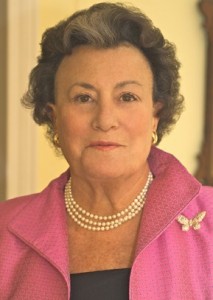WomenCorporateDirectors Addresses Diversity Topics from 2012 Board of Directors Survey – by Susan Stautberg
The issue of diversity on corporate boards is gaining interest globally – with countries such as Malaysia implementing quotas – but male and female directors around the world disagree on how to best address the lack of women in the boardroom.
In the newly released global 2012 Board of Directors Survey – conducted by WomenCorporateDirectors (WCD), Heidrick & Struggles, and Harvard Business School Professor Boris Groysberg – men and women corporate directors reported similar viewpoints on most strategic priorities, but not on diversity. Just over half the women directors believe that quotas are an effective tool for increasing diversity in the boardroom, but only 25% of men agreed.
The survey elicited responses from 1,067 directors in 58 countries, including several in Asia, and is the largest and most global survey the group has facilitated.
When asked to rank the most effective ways to build diverse corporate boards, women directors cited “board leadership serving as champions of board diversity” as the #1 factor. Men in the survey ranked this equally with “developing a pipeline through director advocacy, mentorship, and training.”
“Women tend to put the responsibility squarely on board leadership, while men see it as both a pipeline and a leadership issue,” said Henrietta H. Fore, Global Co-Chair of WCD and of the Asia Society Board of Trustees. “Women view the board chairs, lead directors, and nominating committee chairs as the real change agents in building a diverse boardroom.”
As the largest global organization of women corporate directors – with new chapters opening in Japan, and soon the Philippines, and South Korea – WCD sees board leadership as the instrumental force in making their boards more diverse. The group promotes its “Call to Action” to business leaders – a series of action steps that includes roles for various stakeholders, including:
- Search firms and nominating committees. Similar to the National Football League’s “Rooney’s Rule” (which ensures that an African-American coach is considered in each coach search), these groups should ensure that every director slate includes at least one woman.
- Academic institutions, research groups and the media. More research and resources should be focused on the business case and business issues around board diversity.
- Investors and shareholders. Prudent investors should demand that their boards select the best board members, period, and not just those who are best friends with the CEO.
- CEOs. But diversity-friendly CEOs are also a powerful force for change. At Campbell’s Soup, then-CEO Doug Conant became an active sponsor for an exceptionally talented executive in his ranks who he knew had what it took to lead the company. Today, that person, Denise Morrison, is CEO and director. At DuPont, Chad Holliday championed Ellen Kullman, who now serves as the company’s CEO and chairman of the board.
In addition to the “Call to Action,” WomenCorporateDirectors has also launched their Global Nominating Commission to provide guidance for boosting the number of women on boards of the Fortune 500, FTSE 100, Nikkei 225, and other corporate groups in Asia and throughout the world. Through databases and other resources, such initiatives can help make sure that companies know how to find diverse talent and will compile the best approaches for supporting diverse board recruitment.
Other tactics that are being employed globally – most particularly regulatory quotas mandating certain percentages of women on boards – are finding a much more mixed reaction among directors.
While women directors are more sympathetic than men to the idea of quotas, the whole topic of regulation in general is one that concerns male and female directors across the board. According to the Board Survey’s U.S. respondents, the threat of increasing regulations on top of those already levied since the start of the global financial crisis is seen as the biggest obstacle to achieving strategic objectives. Both men and women directors in the U.S. cited the “regulatory environment” as the top challenge for their companies, followed closely by the need to “attract and retain top talent.” Directors outside the U.S. named regulatory environment and talent concerns equally.
Rather than a regulatory solution, the individualized needs of different companies demand a complex and more nuanced set of tools to improve diverse representation in the boardroom — including the advocacy of many different layers of stakeholders.
Enlisting more women directors is part of a larger effort, in fact, to increase board diversity across many levels. Global companies today require governance informed by the kind of diversity that isn’t easily addressed by quotas. This calls for different cultures within boardrooms and for different skill sets, experiences and ideas from directors.
Within a company, leadership can insure that there are women and other diverse candidates with the ability to achieve success. They can identify talent and make sure that these individuals are visible to senior management and to outside networks. Pipeline arguments can be mitigated as talent is identified and celebrated, and as channels through various networks to the boardroom become more open to these candidates.
Social and historical realities may call for governments in certain parts of the world to take a more active role in pushing private enterprise to adopt a more equitable gender balance, as was the case with new mandates introduced last year in Malaysia. But elsewhere, a nuanced and pragmatic approach makes more sense.
An internal mandate and business case for diverse leadership in governance allows for an organic change to occur without regulation and c-level management can contribute to this by finding senior diversity candidates and helping to open networks to the boardroom through the leadership of their companies.
Susan Schiffer Stautberg is the Co-Founder and Co-Chair of WomenCorporateDirectors (WCD), the only global membership organization and community of Women Corporate Directors.


